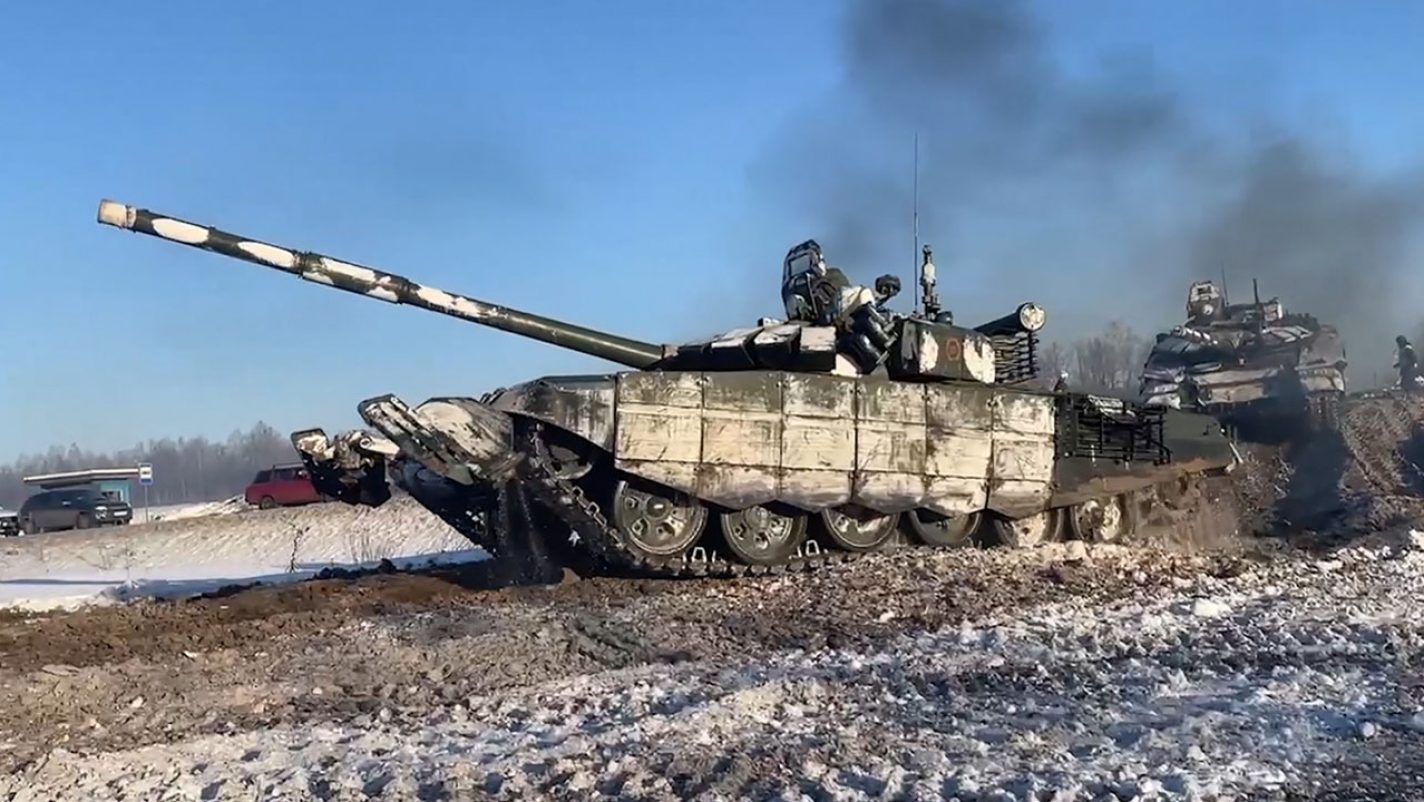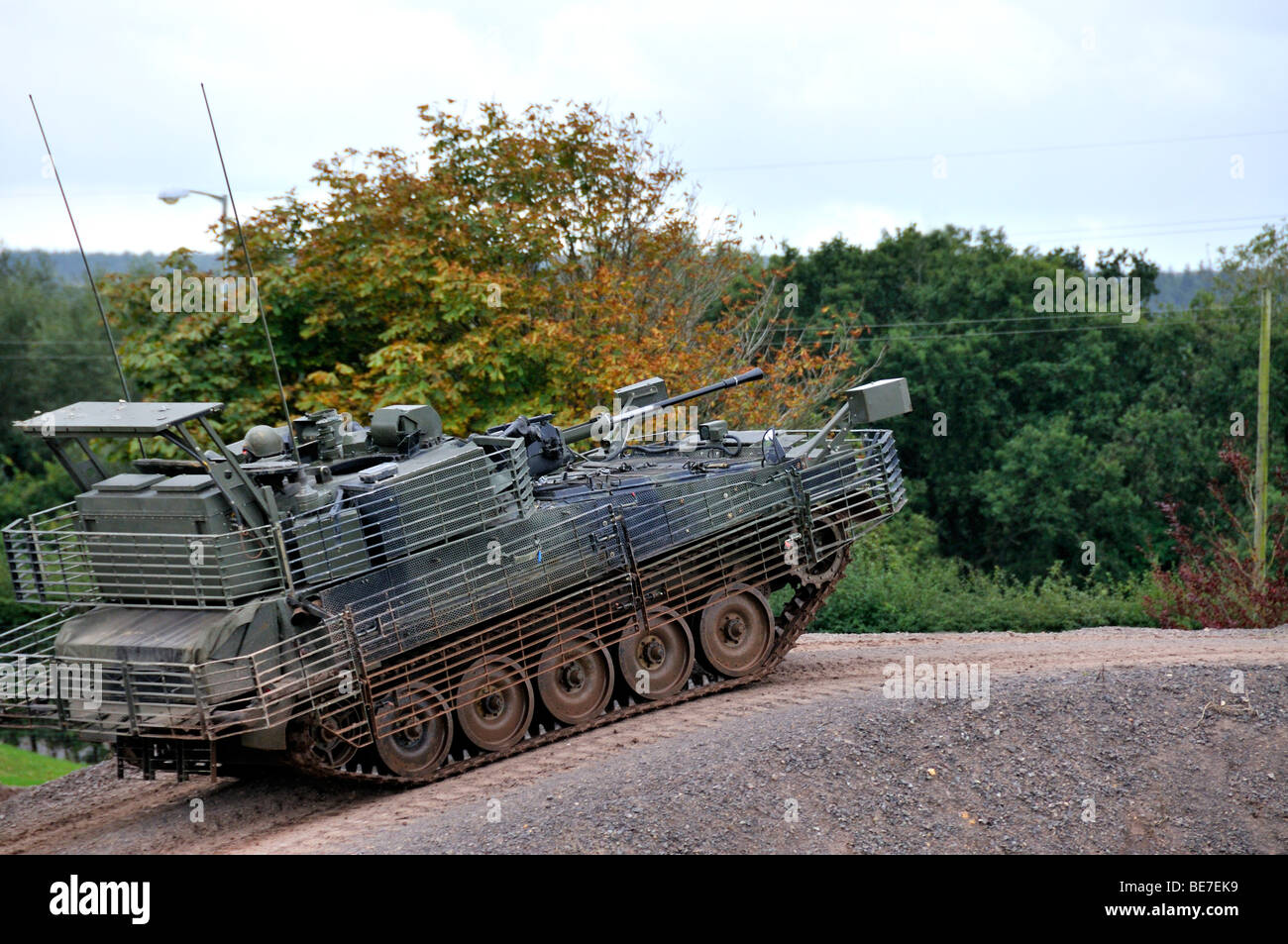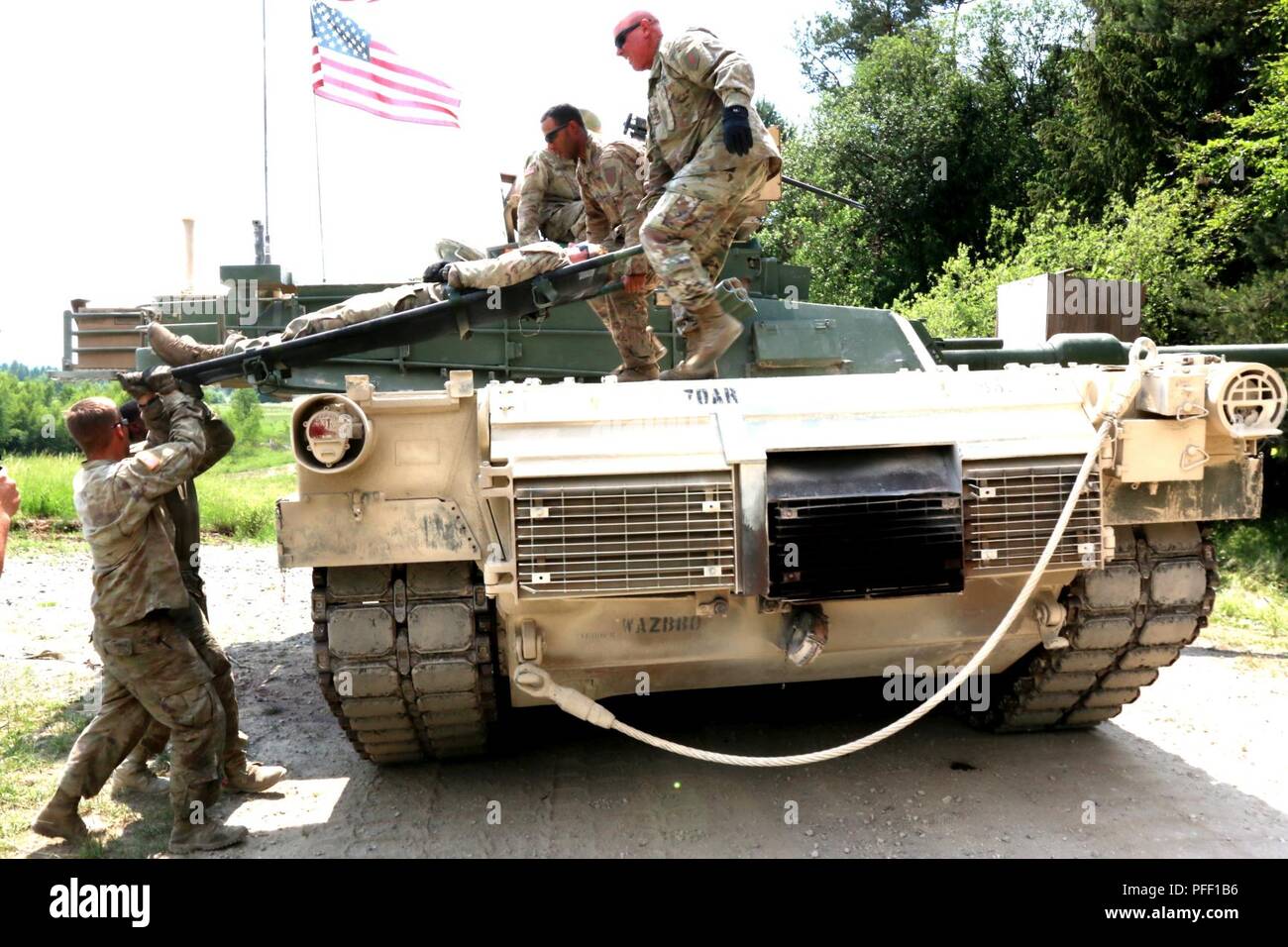Tank Cage Armor - Similar armor appeared on some Russian tanks prior to the attack, but it was ineffective in mitigating anti-tank missile attacks.
Some of the T-62 tanks removed by Russia from mothballs and shipped to Ukraine were seen on the battlefield sporting makeshift armored 'cages' on top of their turrets. This suggests that Russian forces are well aware of the vulnerability of these former armored vehicles to Ukrainian anti-tank weapons.
Tank Cage Armor

The T-62 medium tanks reportedly seen in the southern region of Kherson are fitted with what appears to be raised armor, or cage, designed to mitigate the peak attack profiles used by many anti-tank guided missiles (ATGMs) such as the USA- . providing spears and drone effects by dropping ammunition on top of the vehicle.
Triumph Of The Wheeled Battalions
These tanks also feature some form of makeshift shield or armor mounted vertically on the deck behind the turret. This plate could also be the tank's engine hatch, raised to give the turret some protection from behind.
With no additional slatted armor bolted to the tanks' hulls, the Russian soldiers operating these tanks seem less concerned with high-explosive anti-tank shells than rocket-propelled grenades (RPGs) and other simpler anti-tank weapons than attacks from above.
The tanks appear to be wearing warehouse codes in white paint along the sides of their bodies, which raises the question of how much maintenance attention the vehicles received after being taken out of long-term storage and brought to the front.
Photos of at least one T-62 shot down came shortly after a trainload of T-62s was pulled in late May, arriving at Melitopol railway station in southeastern Ukraine. These tanks used codes similar to those recently seen in Kherson Oblast with improvised armour.
Russia Shows Off New Version Of Its Heavy Combat Vehicle
Slat armor or cages of this type have already been seen on other Russian tanks assigned to units in Crimea and other occupied areas in southern Ukraine. Even on more modern tanks such as the T-72 and T-80, cage armor is questionable and of no defensive value against modern ATGMS such as those Ukrainian forces have used to lethal effect since the Spontaneous Invasion of Russia. It is visually confirmed that Russia lost about seven tanks a day on average during the first 100 days of the war, and the real number is likely to be much higher. While not all of these losses were caused by ATGMs, Ukrainian artillery and drone strikes also did damage to Russian armor.
This type of cage armor is intended to protect the top of a tank's turret - where armored vehicles are most vulnerable - from the top-down blast of ATGMs such as the Javelin, a next-generation lightweight anti-tank weapon. NLAW), or the Ukrainian-made Skif, also known as the Stugna-P. Cage armor can reduce the effectiveness of some offensive ammunition by interfering with the missile's firing sequence before its warhead hits the tank. This may reduce the likelihood of death, but plate-metal armor alone is unlikely to defeat modern ATGMs, and the T-62 is more lightly armored than newer tank designs, putting it at a disadvantage in the field. start. -tank guns on Soviet-era target tanks equipped with this exact type of armor before a Russian tank crossed the border in February. The results were devastating.
With the evidence in mind, cage armor is likely to be more relevant to mitigating drone strikes from above than countering anti-tank guided missiles, and even the former is questionable.

Russian production of the T-62 began in 1962 as a response to the UK's FV4201 Main and US M60 Patton main battle tanks. They were last built in 1975.
Death From Above
, a Russian tank crew member said that the cage's armor, which he called "dynamic protection", "drastically reduces the ability to penetrate an anti-tank projectile or missile". However, the additional armor protection was offset by its operational inconvenience, said Tank Captain Alexei Ukhachev.
"First, we welded the body kits (metal grids to protect against anti-tank missiles) to the tanks, and then they were all removed," Ukhachev said, according to a Google translation of the article. "First, it is inconvenient: the machine gun does not move, when the antenna closes on the grid, the radio station burns out, the connection disappears. And if there is some kind of fire, it will be unrealistic to get out of the tank there. Because when you rise at your full height, you rest. Then they were all removed and thrown away."
Ukhachev claims to have participated in a battle northwest of Donetsk in the early days of Russia's "Special Military Operation". His tank was hit by an ATGM but not destroyed. He and his team suffered a concussion and ended up moving to Moscow for medical treatment. He was later sent back to Ukraine, where on 10 May he was killed by a Ukrainian missile strike southeast of Kharkiv.
Some of the T-62 tanks removed by Russia from mothballs and shipped to Ukraine were seen on the battlefield in Kherson Oblast displaying makeshift armored 'cages' on top of their turrets. This suggests that Russian forces are well aware of the vulnerability of these former armored vehicles to certain types of Ukrainian attacks.
Russia Is Installing Metal Grids On Its T 72b1 In Crimea
The tanks appear to be wearing warehouse codes in white paint along the sides of their bodies, which raises the question of how much maintenance attention the vehicles received after being taken out of long-term storage and moved to eastern Ukraine.
Slat armor or cages of this type have already been seen on other Russian tanks assigned to units in Crimea and other occupied areas in southern Ukraine. Even on more modern tanks such as the T-72 and T-80, cage armor is highly questionable, with no defensive value against advanced ATGMS such as the ones Ukrainian forces have used so lethally since Russia began its invasion. . It is visually confirmed that Russia lost about seven tanks a day on average during the first 100 days of the war, and the real number is likely to be much higher. While not all of these losses were caused by ATGMs, Ukrainian artillery and drone strikes also did damage to Russian armor.
This type of cage armor is intended to protect the top of a tank's turret - where armored vehicles are most vulnerable - from the top-down blast of ATGMs such as the Javelin and the Light Anti-Tank Weapon. Swedish-British Next Generation (NLAW), among others. The idea is that cage armor could reduce the effectiveness of some surface-to-surface munitions, interfering with the missile firing sequence in some cases. This may reduce the likelihood of death, but plate-metal armor alone is unlikely to defeat modern ATGMs, and the T-62 is more lightly armored than newer tank designs, putting it at a disadvantage in the field. start. -tank guns on Soviet-era target tanks equipped with this exact type of armor before a Russian tank crossed the border in February. The results were devastating with the armor having no effect.

, a Russian tank crew member said that the cage's armor, which he called "dynamic protection", "drastically reduces the ability to penetrate an anti-tank projectile or missile". However, the theoretical protection of the armor was offset by its operational inconvenience, said tank captain Alexei Ukhachev.
Serbia Exhibits New T 72ms White Eagle Main Battle Tanks Donated By Russia
He says Russia would be sending Cold War-era T-62s into a combat environment that has already chewed up some of its more modern designs. It is unlikely that Russia would recreate the frontier museum exhibits if it weren't short of usable tanks. Getting T-62s to the front lines in or near Ukraine is also a logistical challenge. The tanks fire 115mm ammunition, while the more modern T-72 and T-90 tanks mount 125mm main guns, so a second caliber of ammunition is needed in sufficient supply to accompany the T-62s into the field. That said, the tanks themselves are very simple by modern standards and relatively easy to keep in working order, although their material condition after decades of storage is unknown and is probably at its best.
So far, old tanks have only appeared in Russian-occupied territory. This could mean that they are barred from working on the front lines and are instead used to protect territory already conquered. At least some of these will likely also be operated by irregular separatist forces that the Russians have historically chosen to arm with obsolete military hardware.
Regardless of who is operating them, where and why, T-62s are the most vulnerable tanks Russia has used in the conflict, which has been absolutely brutal for the most advanced tanks. With that in mind, the cage armor we see attached to T-62 turrets is unlikely to have much of an impact beyond the psychological on the battlefield. , and standoff armor, is a type of vehicle armor designed to protect against high-explosive anti-tank (HEAT) attacks, as used by anti-tank guided missiles (ATGMs) and rocket-propelled grenades (RPGs).
Slat armor in the form of a rigid metal grid is fitted around key areas of the vehicle, which disrupts the warhead-shaped payload by crushing it, preventing optimal firing from occurring, or damaging the fogging mechanism, preventing
Buy Modelcollect Moc72055 1:72 Bmp 3 Infantry Fighting Vehicle With Cage Armor [model Building Kit] Online At Desertcartjamaica
Cage tank, crye cage armor chassis, pro armor rzr cage, under armor cage jacket, crye cage armor, pro armor baja cage, pro armor roll cage, pro armor cage, armor tank, armor cage, pro armor asylum cage, cage armor chassis
0 Comments